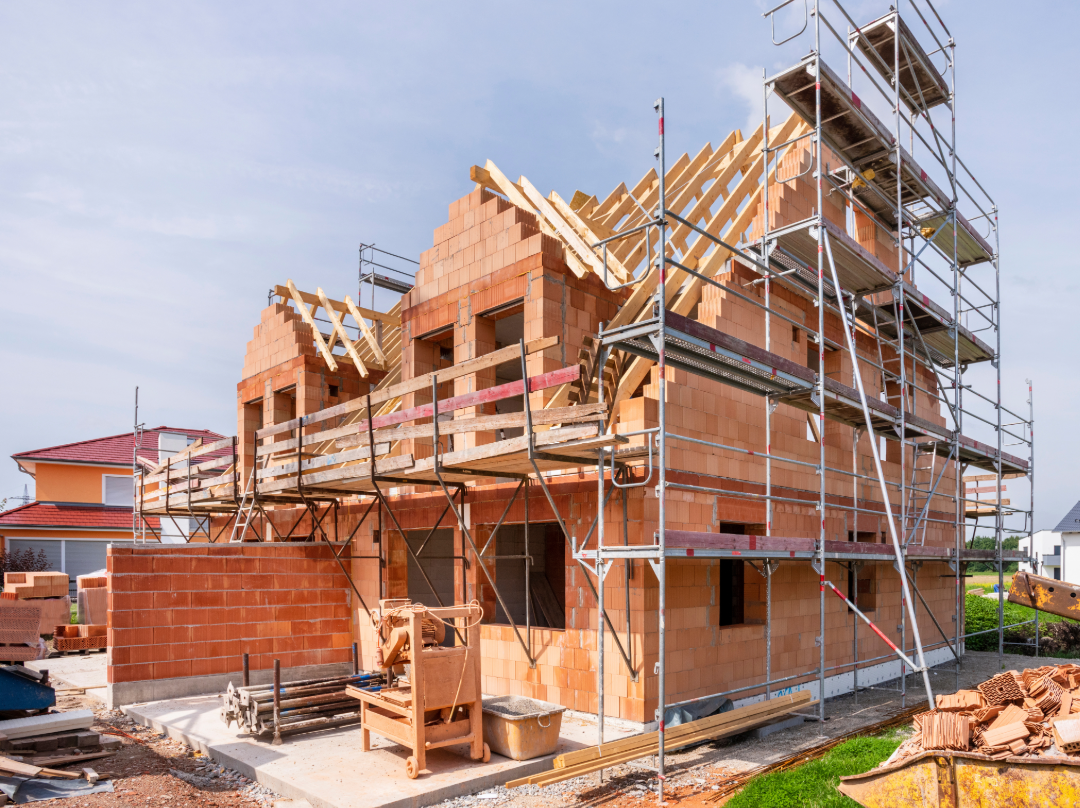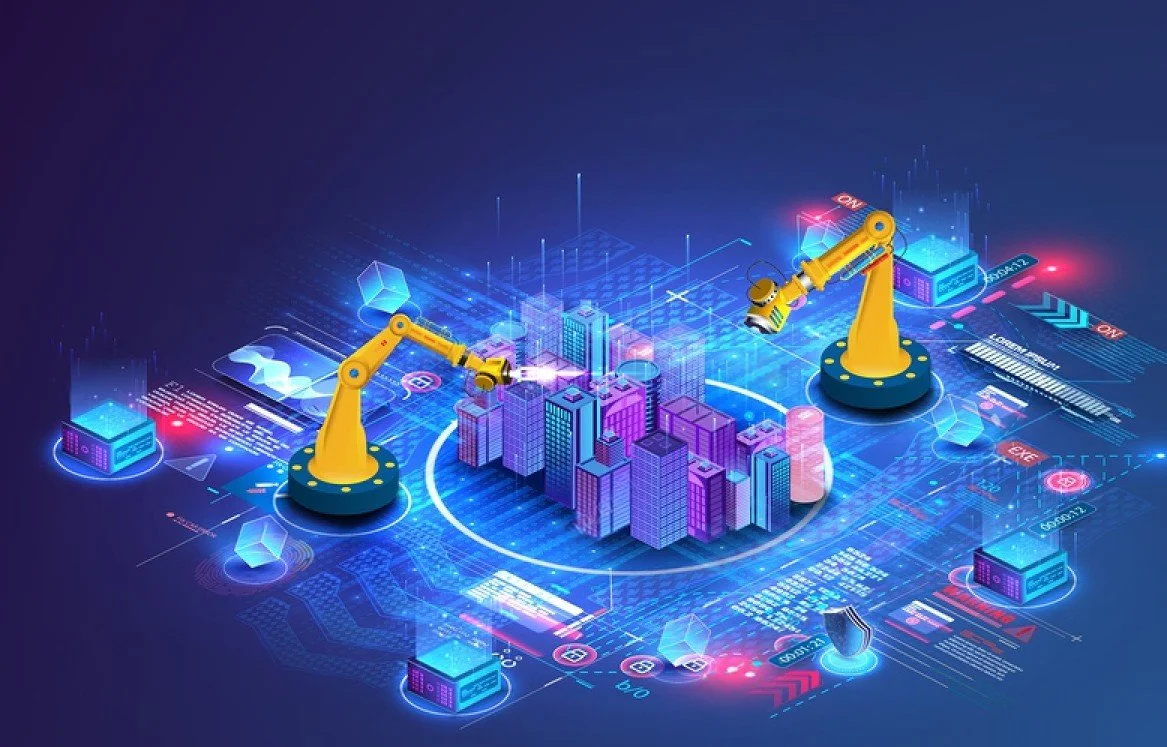Rewiring Britain’s Toolbox:
The Transformative and Tumultuous Rise of AI in UK Housebuilding.
The UK’s housebuilding sector stands at a crossroads, caught between soaring demand for homes and a rapidly aging, shrinking workforce. Into this pressure cooker steps artificial intelligence (AI), a force of innovation, disruption, and uncertainty.
From AI-powered planning tools and robotic labourers to predictive project software, AI is tearing down some of the sector’s oldest inefficiencies, but not without raising uncomfortable questions about jobs, ethics, and equity. For recruiters, developers, and construction leaders alike, this is a defining moment. What we build next may not just be homes but the very future of the industry itself.
AI in Planning.
AI's most immediate impact is being felt in planning. Traditionally, planning in the UK has been slow, paper-based, and under-resourced. This bottleneck has choked housing delivery, delaying vital projects.
Enter Extract - an AI tool developed with government support. Extract converts handwritten and scanned documents into searchable digital data in minutes, not hours. In trials, it digitised over 100 planning records per day, significantly accelerating project timelines. It also interprets old maps and handwritten notes, making historical data more accessible to planners, architects, and developers. This doesn’t just help large-scale developments. Faster, clearer planning information benefits local councils, housing associations, and SMEs who previously struggled to navigate complex processes.
Intelligent Land Sourcing.
AI is also revolutionising land sourcing. In the past, developers relied on manual research and relationship networks. Now platforms like Searchland allow developers to filter thousands of parcels by parameters such as size, ownership history, and planning potential. What used to take weeks now takes seconds.
This levels the playing field. Smaller firms can compete with larger ones, accessing high-quality opportunities without needing in-house GIS specialists or legacy connections. The result is a more dynamic and competitive market, where technology drives merit rather than scale.
Robotics and Modern Methods of Construction: From Manual to Modular.
Robotic automation is changing how homes are physically built. In modular factories, robotic arms now weld steel frames, install windows, and even lay bricks. Companies like Dodd Modular are using robotics to create precision-built structures faster and more safely than traditional methods.
These systems increase productivity by up to 40 percent and can reduce installation costs by around 30 percent. They also offer consistent quality, improved worker safety, and shorter build times. But adoption remains uneven. Smaller builders often lack the capital to invest in this technology. Without shared access to off-site factories or regional automation hubs, many SMEs risk falling behind.
The Workforce Paradox.
The rise of AI presents a paradox for the workforce. On one hand, AI boosts safety and efficiency. Machine vision can detect hazards in real time. Predictive analytics improve project planning and reduce downtime. Digital twins allow developers to simulate entire builds before breaking ground.
On the other hand, automation threatens traditional roles. From quantity surveyors to site supervisors, tasks once seen as safe are now being partially automated. Bricklaying, joinery, and even project scheduling are increasingly handled by software or robots.
This creates both risk and opportunity. Workers must adapt to a digital-first environment. Skills in robotics supervision, BIM modelling, drone surveying, and AI-assisted compliance are becoming essential.
New Roles for a New Era
AI will not eliminate jobs across the board. It will reshape them. Expect demand for roles like:
AI Construction Integrators: Professionals who ensure AI tools are correctly embedded across planning, procurement, and build phases
Digital Site Supervisors: Tradespeople with oversight of robotic teams and real-time data dashboards
Construction Data Auditors: Specialists who monitor algorithmic decisions to ensure regulatory compliance and fairness
Remote Safety Engineers: Experts who manage machine-vision safety systems from off-site control rooms
AI Ethics Officers: Consultants who ensure privacy, transparency, and fair outcomes in AI-guided development projects
The Dark Side
Despite the promise, AI brings serious concerns.
Job Displacement: As automation takes over manual and clerical work, some roles may disappear faster than new ones emerge. Without reskilling pathways, workers risk being left behind
Skills Gap: Over 30 percent of firms admit they lack adequate AI-related skills in-house, despite claiming digital readiness. The pipeline of digitally literate construction professionals is dangerously thin
Algorithmic Bias: AI can unintentionally reinforce existing inequalities in housing and hiring decisions. For example, site selection tools might avoid lower-income areas or make assumptions based on incomplete datasets
Data Privacy: With AI systems collecting and processing sensitive data across sites, questions around consent, surveillance, and data protection are mounting
Regulatory Lag: Government oversight has not kept pace. Current building regulations do not fully address the ethical and legal implications of AI-led decisions, leaving grey areas in accountability
From Large Builders to SMEs
Large firms can absorb the costs of AI adoption and tailor their own proprietary solutions. They’re also better equipped to upskill their workforce or partner with tech providers.
SMEs, meanwhile, face significant barriers. Without government incentives, shared resources, or access to regional tech hubs, many will struggle to compete in an AI-accelerated landscape. Yet these firms account for a significant share of UK housing delivery. If they fall behind, national housing targets may be jeopardised.
What Next?
The future of housebuilding is not a choice between people and machines. It is about partnership. AI can eliminate inefficiency, reduce errors, and enhance safety. But it cannot replace human intuition, creativity, or accountability.
Imagine future planners free from paperwork, focused on community design. Tradespeople overseeing robotics while applying bespoke finishes. Data specialists ensuring fair, transparent decision-making. This is a sector that evolves, not erodes.
To get there, the industry must invest in training, update regulation, and commit to ethical, inclusive technology.
Key Statistics
Over 350,000 planning applications are processed annually. Extract reduces application review time from up to two hours to a few minutes
AI-powered land sourcing identifies viable development sites in seconds, democratising access to new opportunities
Robotics and modular construction boost productivity by 40 percent and reduce costs by 30 percent
76 percent of UK construction leaders expect AI to significantly improve safety, efficiency, and delivery timelines
Final Thought
AI will not just change how we build homes. It will change who builds them, how they work, and what skills they need. The challenge now is to ensure the benefits of AI are widely shared, ethically deployed, and aligned with human values. The homes of tomorrow will be built by a new kind of workforce, part human, part machine, and wholly reimagined.



